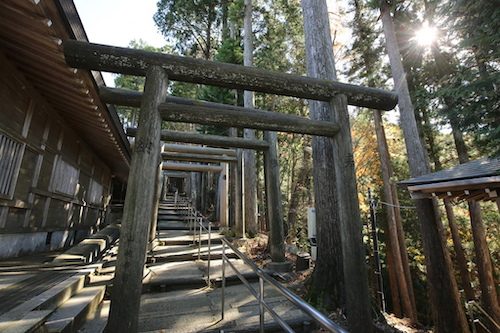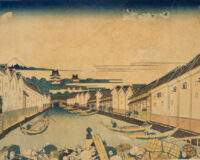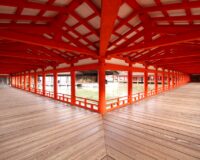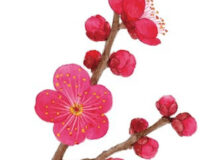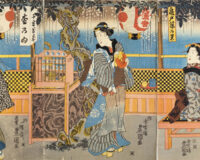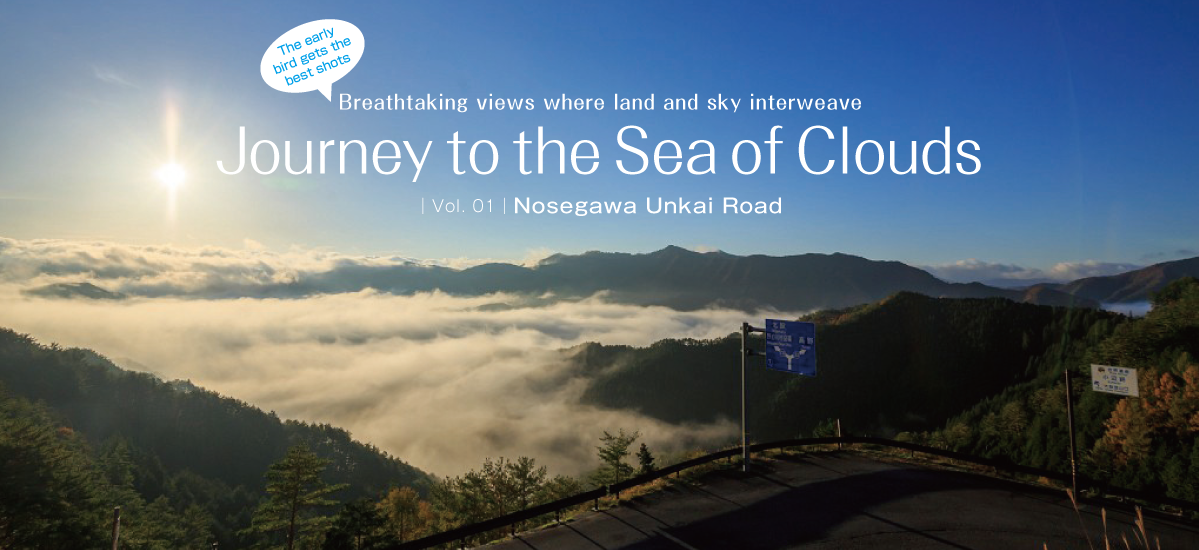
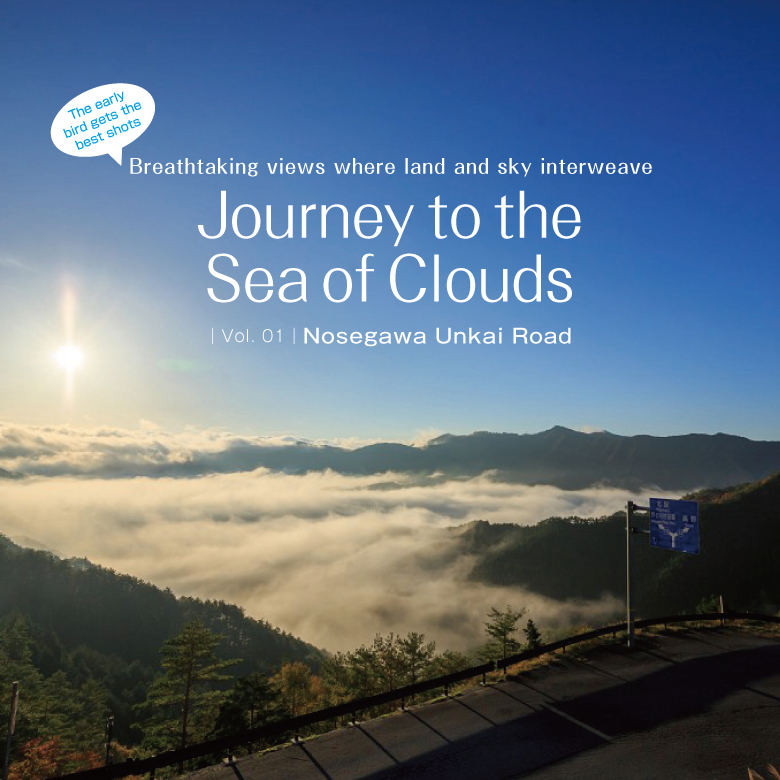
Viewed from an airplane window or from atop a high mountain, the clouds below appear as a vast sea. This spectacle has a name in Japanese – unkai or ‘the sea of clouds’. This phenomenon is rarely seen except from the highest altitudes, but there are a few places in Japan where, under certain conditions, the sea of clouds can be seen from roads and lookout points that are not especially elevated.
There are several different types of unkai, but what they all have in common is that they only occur for a brief time around daybreak. As the sun rises and the land warms, the sea of clouds evaporates without a trace. You have to get up earlier than usual to witness this phenomenon, but the ethereal sight is worth the effort.
Text : Sasaki Takashi / Photos : 平島 格 Kaku Hirashima / English Version : Judy Evans
Keyword : Nara Prefecture / Driving / Kii Peninsula / Nosegawa Unkai Road / Sea of Clouds
Unkai Spot No. 1: Nosegawa Unkai Road
Nosegawamura, Nara Prefecture
Unkai Season: All year round
Unkai probability: ☆☆☆
※The ‘unkai probability’ is a rough estimate of the probability of the sea-of-clouds phenomenon occurring. Three stars means the phenomenon occurs at least 2-3 times a week during the unkai season. Two stars is once or twice a week, and one star is once or twice a month.
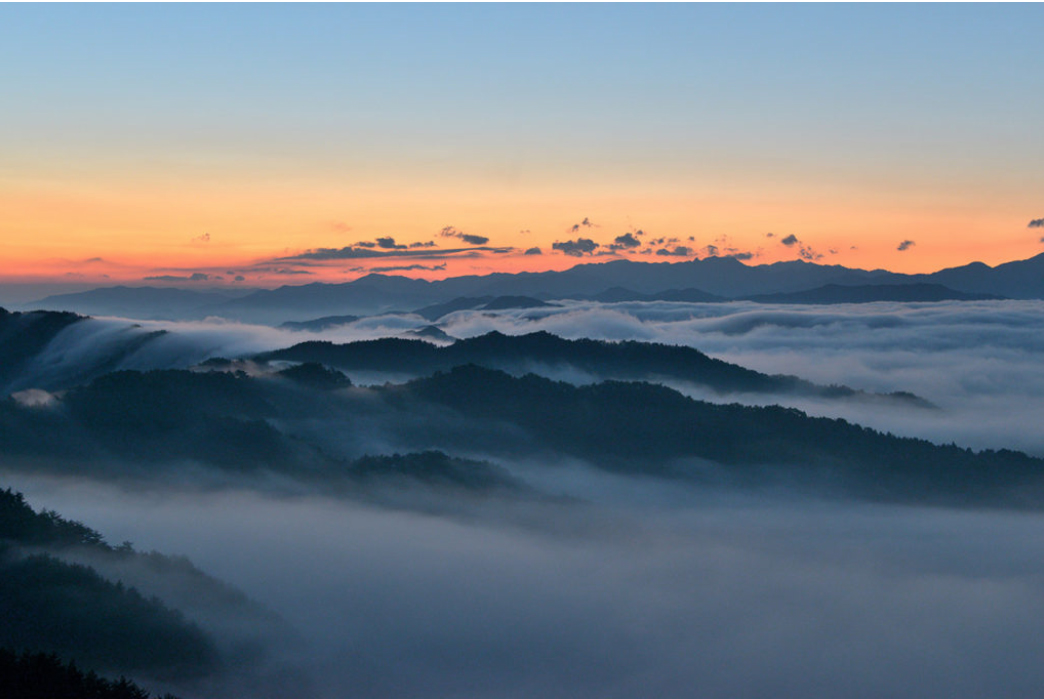
Encountering the ‘Azure Dragon Cloud’. An auspicious sign?
Nosegawa-mura is a sparsely-populated area consisting of a number of small settlements scattered across 155 square kilometres of rugged mountains and deep valleys in southern Nara Prefecture on the Kii Peninsula. This secluded area, with neither supermarket nor convenience store and only one set of traffic lights, attracts ‘unkai hunters’ (yes, that is a thing – people whose hobby is sea-of-clouds photography) due to the high probability of being able to see the unkai phenomenon.
The phenomenon occurs all year round in Nosegawa-mura, regardless of the season. At daybreak, if there is little to no wind and it has just stopped raining, the sea of clouds is all but guaranteed to appear. The spectacle can be seen from a number of points along Routes 53 and 733, with several viewing spots near Tateri-kōjin Shrine.
Among the various types of cloud formation that occur is the Kaiun Seiryū Unkai, or ‘Lucky Blue Dragon Cloud’, which is particularly sought-after among unkai hunters. This cloud formation rises up from the valleys near the Tenguki-tōge Pass on the narrow and winding Route 53, and is said to resemble the mythical Azure Dragon ascending into the heavens. Rumour has it that those who witness the Azure Dragon cloud will be blessed with good fortune!
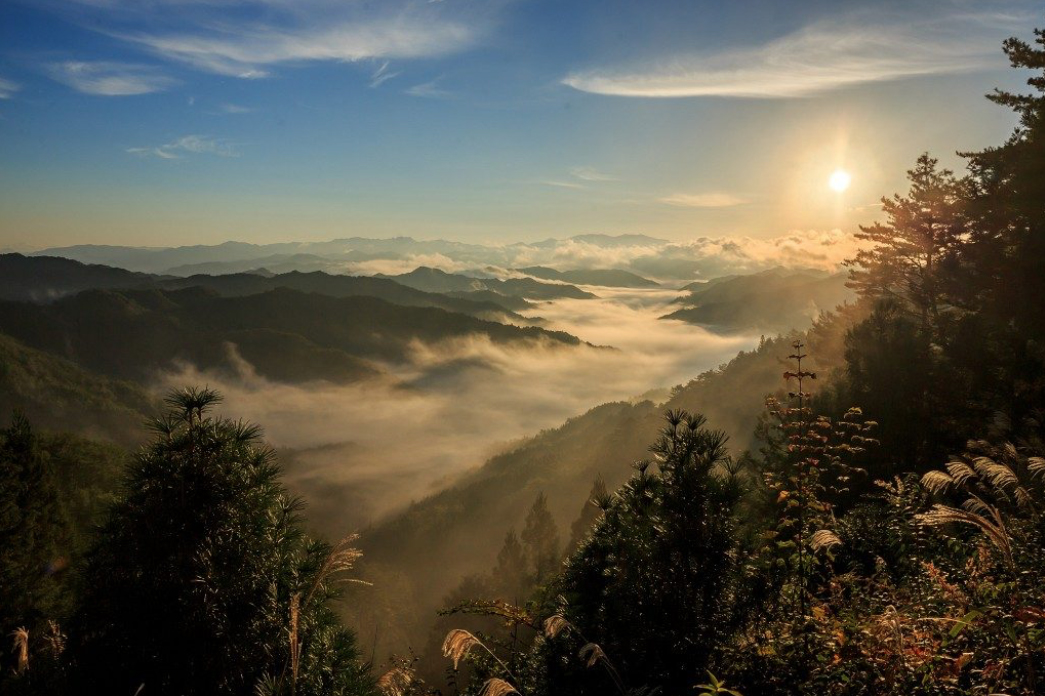
Moisture-laden air from the Pacific meets the cool air of Nosegawa’s river valleys
Even the locals are not exactly sure why the sea-of-clouds phenomenon occurs so frequently here, but it seems to have lot to do with the local topography. All the rivers and streams of Nosegawa-mura empty into the Tōtsugawa/Kumano River, which flows south to the Pacific Ocean. It is thought that onshore breezes carry damp moisture-laden air from the sea up into the hills during the night, following the paths of these rivers and streams in reverse. The magnificent cloud formations are thought to occur as the moisture-laden air encounters a drop in air temperature and atmospheric pressure up in the valleys.
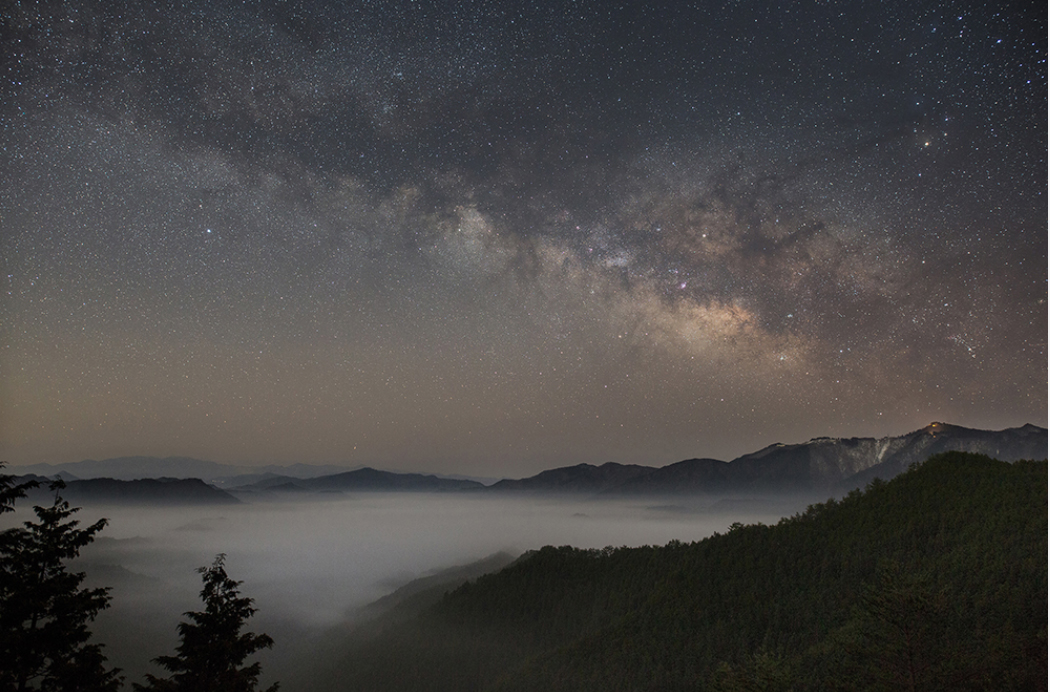
■ Access Guide
With no rail access and very few buses into the district, the simplest way to get to Nosegawa-mura is by car.
Exit the toll-free section of the Keinawa Expressway (京奈和自動車道) at the Gojō Interchange (五條IC). The Tenguki-tōge Pass ‘unkai spot’ is about 40 km from the interchange and takes around an hour and twenty minutes (the road becomes winding and very narrow in places). First, find your way from the interchange to Route 371 (the Kōya-Ryūjin Skyline Route) and head south towards the central part of Nosegawa-mura, where the village hall (yakuba) is located. From here, Route 733 links up to Route 53 and the ‘unkai spots’. Route 53 is a narrow paved loop road that takes you through the forest (refer to the Google map below).
■ Shōwa Shokudō café
The popular Shōwa Shokudō café at the tiny Unkai no Sato no Yado minshuku (inn) opens at 6:00 a.m. so is always bustling with unkai hunters. Their speciality ‘unkai-don’ (500 yen/ photo not allowed) is a popular choice. Bed and breakfast rates start at 4,500 yen per person. Dinner is also available by prior arrangement. The cafe does not have fixed days of business, so please check in advance.
https://www.facebook.com/nosegawa.unkai.no.sato.no.yado/
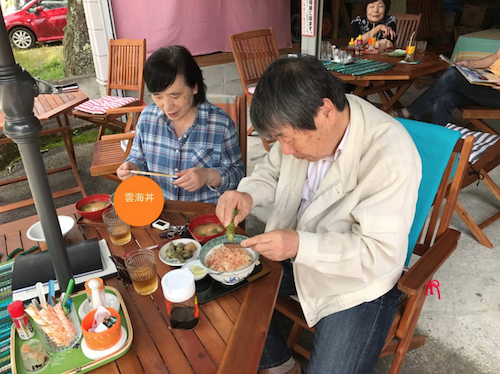
■ Tateri-kōjin Shrine
Tateri-kōjin Shrine dates back 1,200 years. The torii gates that line the approach to the shrine have been donated by companies and individuals from all over Japan.
